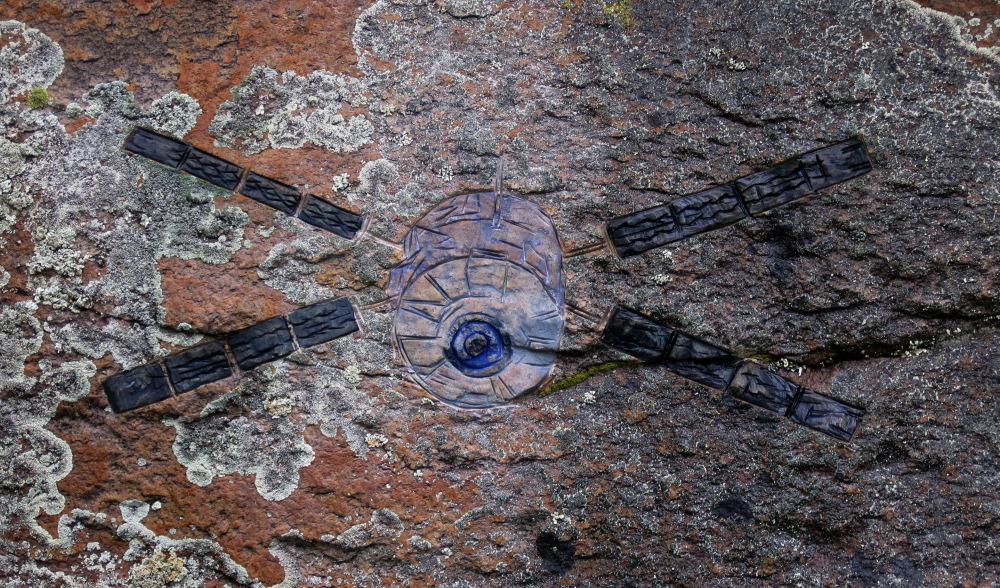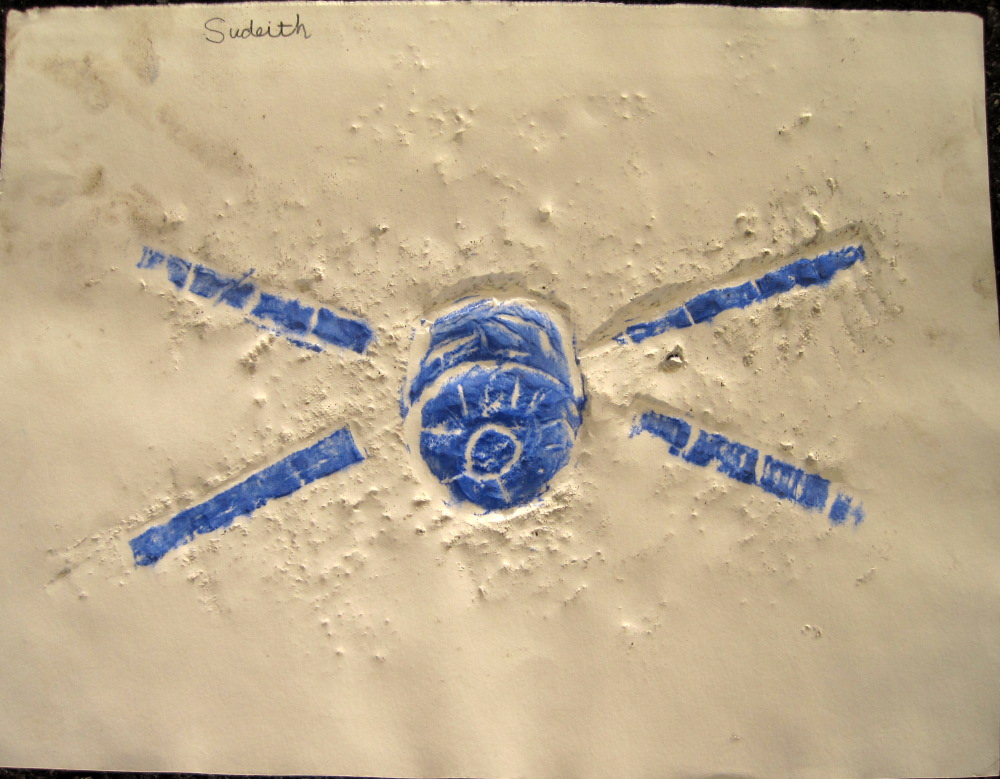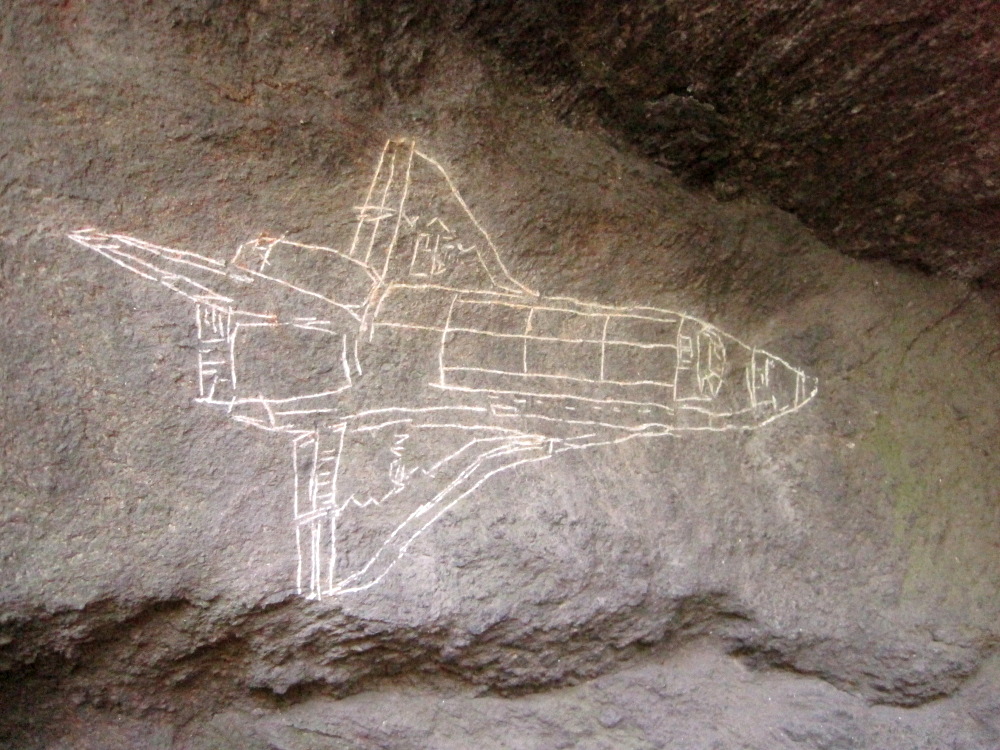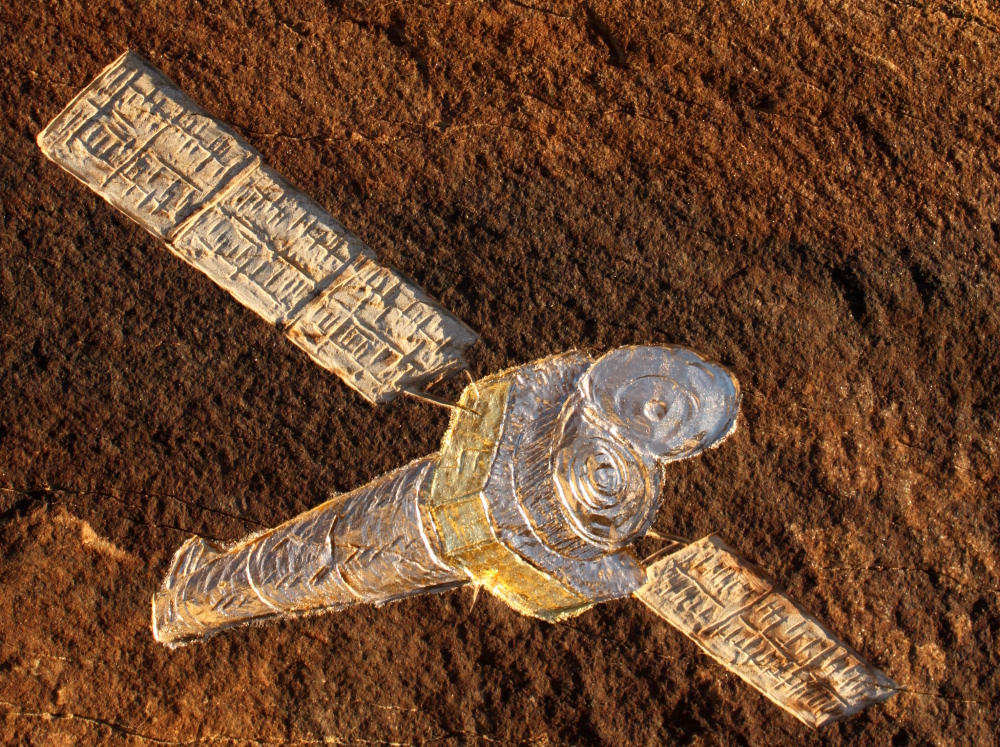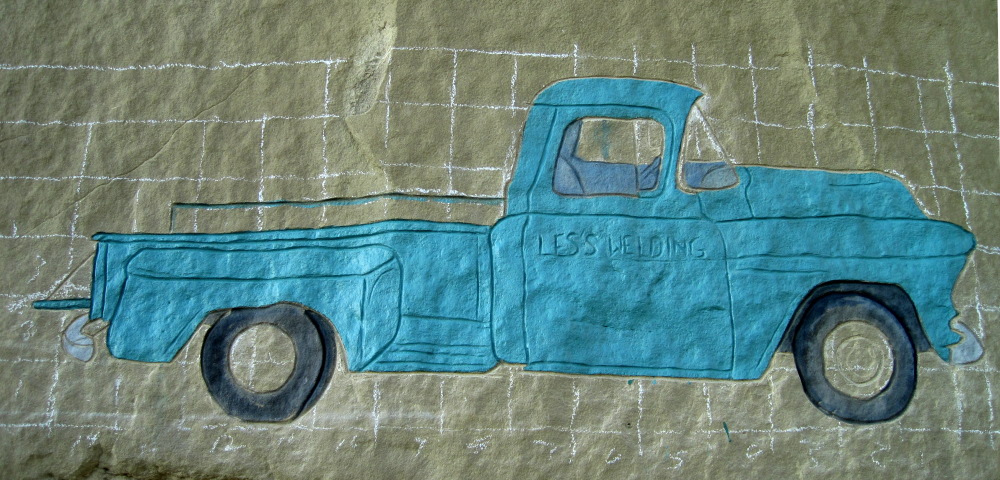Most of the rimrock stone here in Ingomar is not suitable for the carving I like best. It is soft, and more conducive to pictographs. I saw Barrier Canyon pictographs in Utah that are 2000-3000 years old, so pictographs on sand rock *can* be archival. The Ancients though had the benefit of a hundred generations to figure out what are the good spots for painting. My study of the subject suggests that south facing overhangs, preferably very tall overhangs, are the best. The petroglyphs that I found near Musselshell were on south facing sandrock faces. The oldest faces seem to have a redish hue to them, the Montana version of desert varnish. I re-canvassed the rimrock where I am working and found a few south facing rocks with a slightly redish hue and set to making experiments.
Here is the first sand rock pictograph I’ve made. I asked my host what his favorite vehicle was of the many that he has owned. He said, “Oh, probably the 1982 Ford Courier.” It has 270,000 miles and had required almost no work over the years. His kids all drove it to school, and now his wife drives it to work everyday.
I carved with a sharp stone the outline and painted the body of the truck. Hard to say how it will last…







